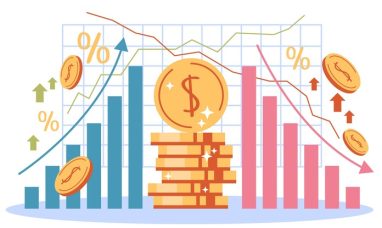Mortgage rates have risen for the first time since May, signaling potential challenges for the housing market. The recent increase in mortgage rates has significant implications for homebuyers, sellers, and the overall economy. Here, we explore the latest data on mortgage rates and what it means for the U.S. housing market.
Recent Rise in Mortgage Rates
According to recent data, the average rate for a 30-year fixed mortgage increased to 7.09%, up from 6.96% the previous week. This marks the first rise in mortgage rates since May, bringing the rates to their highest level in over two decades. The increase comes amid higher inflation and dimmed hopes for a rate cut by the Federal Reserve.
Impact on Homebuyers and the Housing Market
The rise in mortgage rates presents significant challenges for prospective homebuyers. Higher rates mean higher monthly payments, which can make it more difficult for people to afford homes. This could lead to a slowdown in the housing market as fewer people are able to purchase homes at higher interest rates.
Stuart Kaiser, head of equity trading strategy at Citigroup (NYSE:C), emphasized the importance of the labor market in this context. “The labor market for us is the key to the markets. Our general view is you want to run long your U.S. equity portfolio unless or until you get a significant slowdown in payrolls.”
Economic Perspectives on Mortgage Rates
Economists are divided on the implications of the recent rise in mortgage rates. LPL Financial chief economist Jeffrey Roach noted that the data is “sending a warning sign that the labor market could be softening.” This softening could have significant repercussions for the U.S. economy, particularly if it leads to higher unemployment rates.
Nancy Vanden Houten, lead U.S. economist at Oxford Economics, cautioned against over-interpreting weekly jobless claims data, which can be volatile. However, she acknowledged that a persistent rise in initial claims would signal more significant weakness in the labor market. This could provide further justification for the Federal Reserve to consider lowering interest rates in the near future.
Federal Reserve’s Stance
Federal Reserve Chair Jerome Powell has maintained that the central bank needs “greater confidence” in the downward path of inflation before cutting interest rates. In his most recent press conference, Powell indicated that the labor market continues to normalize and has not shown significant signs of concern yet. “We see gradual cooling — gradual moving toward better balance. We’re monitoring it carefully for signs of…something more than that, but we really don’t see that,” Powell said.
However, some economists argue that the current trends in the labor market are not promising. Ian Shepherdson, chief economist at Pantheon Macroeconomics, suggested that hiring and firing indicators point to a sub-100K trend in private payrolls growth over the next three months. This would likely increase the unemployment rate and leave the Fed appearing behind the curve.
Market Implications
The rise in mortgage rates and potential labor market softening have significant implications for the markets. Neil Dutta, head of economics at Renaissance Macro, told Yahoo Finance that with inflation falling and the labor market weakening, the Federal Reserve should consider cutting rates soon. Investors currently expect the Fed to cut rates twice this year, according to Bloomberg data. However, the Fed’s forecasts suggest only one rate cut this year.
With the job openings rate returning to its pre-pandemic level, Dutta expressed concern that further declines in job openings would lead to a rise in unemployment. “I just don’t think the Fed wants to really push the weakening in labor demand that much more,” Dutta said.
Conclusion
The recent rise in mortgage rates marks a significant shift in the U.S. housing market and has broader implications for the economy. As the Federal Reserve continues to monitor these developments, the future direction of interest rates and the health of the labor market will be critical factors to watch.
Featured Image: Freepik © freepik








